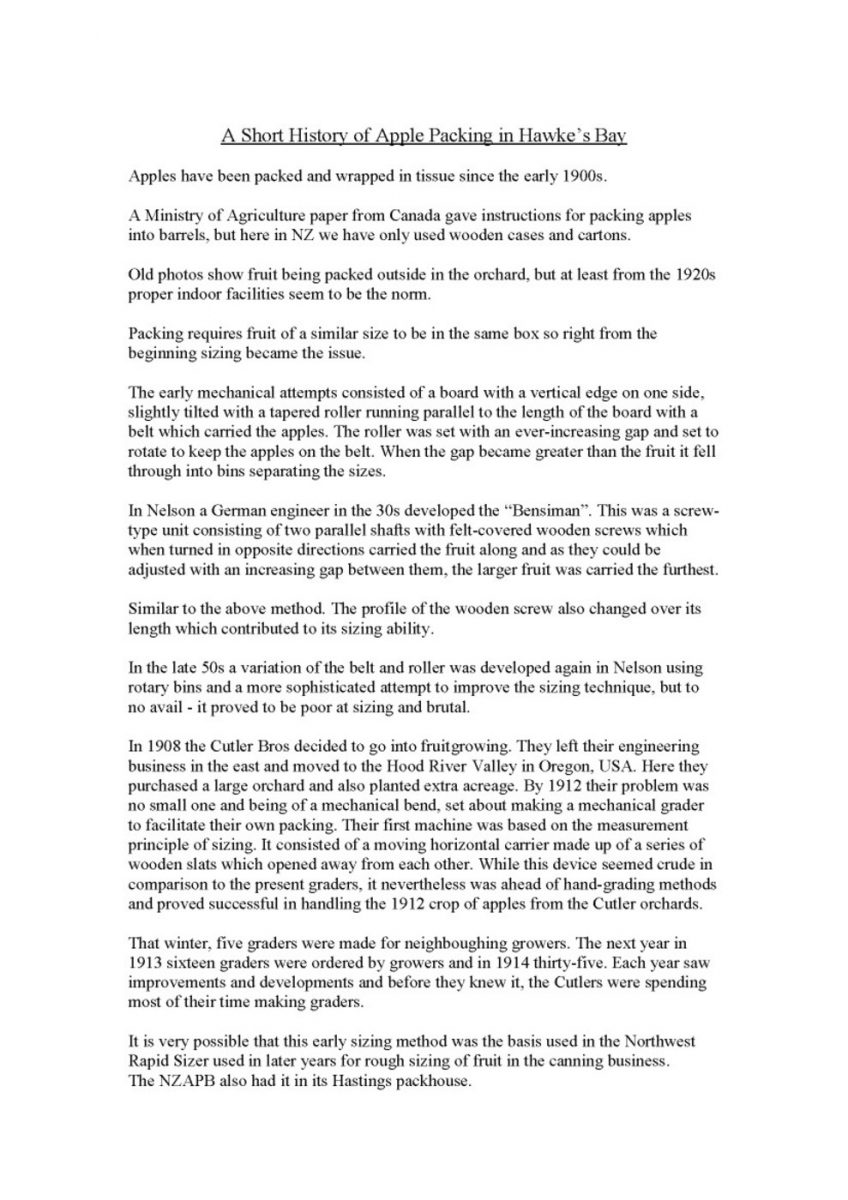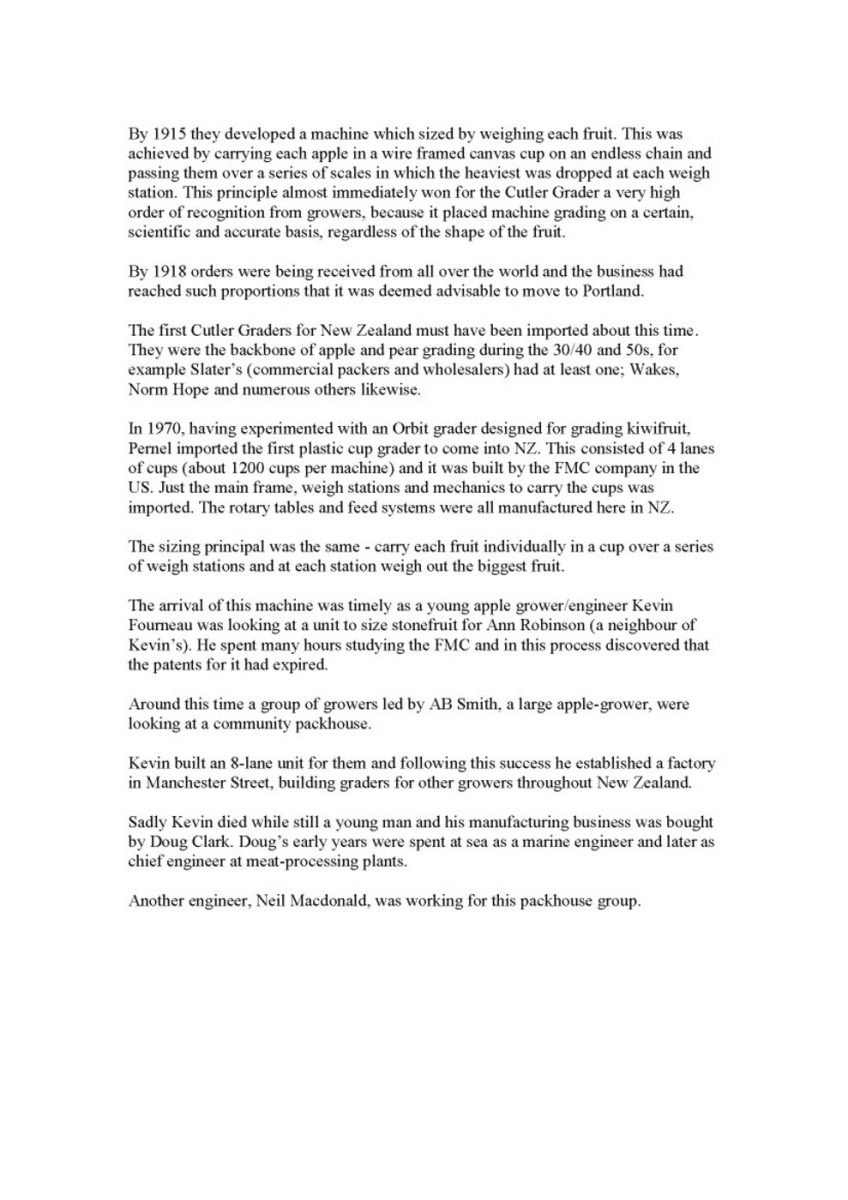A Short History of Apple Packing in Hawke’s Bay
Apples have been packed and wrapped in tissue since the early 1900s.
A Ministry of Agriculture paper from Canada gave instructions for packing apples into barrels, but here in NZ we have only used wooden cases and cartons.
Old photos show fruit being packed outside in the orchard, but at least from the 1920s proper indoor facilities seem to be the norm.
Packing requires fruit of a similar size to be in the same box so right from the beginning sizing became the issue.
The early mechanical attempts consisted of a board with a vertical edge on one side, slightly tilted with a tapered roller running parallel to the length of the board with a belt which carried the apples. The roller was set with an ever-increasing gap and set to rotate to keep the apples on the belt. When the gap became greater than the fruit it fell through into bins separating the sizes.
In Nelson a German engineer in the 30s developed the “Bensiman”. This was a screw-type unit consisting of two parallel shafts with felt-covered wooden screws which when turned in opposite directions carried the fruit along and as they could be adjusted with an increasing gap between them, the larger fruit was carried the furthest.
Similar to the above method. The profile of the wooden screw also changed over its length which contributed to its sizing ability.
In the late 50s a variation of the belt and roller was developed again in Nelson using rotary bins and a more sophisticated attempt to improve the sizing technique, but to no avail – it proved to be poor at sizing and brutal.
In 1908 the Cutler Bros decided to go into fruitgrowing. They left their engineering business in the east and moved to the Hood River Valley in Oregon, USA. Here they purchased a large orchard and also planted extra acreage. By 1912 their problem was no small one and being of a mechanical bend, set about making a mechanical grader to facilitate their own packing. Their first machine was based on the measurement principle of sizing. It consisted of a moving horizontal carrier made up of a series of wooden slats which opened away from each other. While this device seemed crude in comparison to the present graders, it nevertheless was ahead of hand-grading methods and proved successful in handling the 1912 crop of apples from the Cutler orchards.
That winter, five graders were made for neighboughing growers. The next year in 1913 sixteen graders were ordered by growers and in 1914 thirty-five. Each year saw improvements and developments and before they knew it, the Cutlers were spending most of their time making graders.
It is very possible that this early sizing method was the basis used in the Northwest Rapid Sizer used in later years for rough sizing of fruit in the canning business. The NZAPB also had it in its Hastings packhouse.













Do you know something about this record?
Please note we cannot verify the accuracy of any information posted by the community.